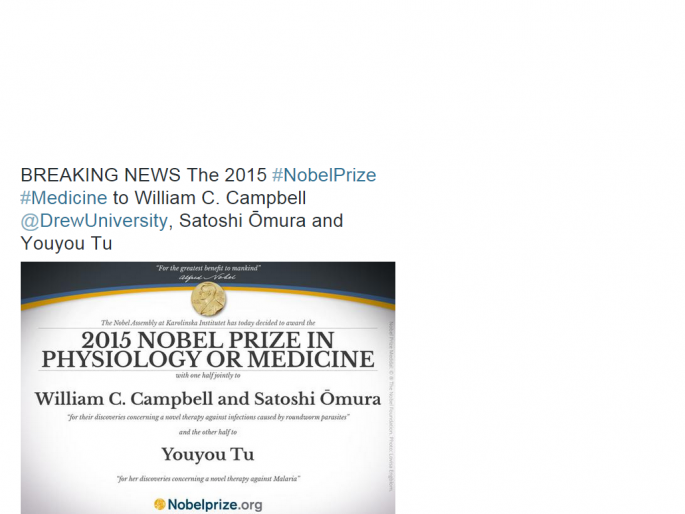The home of Tu Youyou, the pharmacologist who on Monday became the first Chinese citizen to win the Nobel Prize in Medicine, has become a tourist attraction, with parents bringing their children to inspire them.
Even though the house is not open to the public, Tu's former residence in the old town of Ningbo, Zhejiang Province, has attracted numerous visitors ever since she won the international prize.
The former home of the 84-year-old is part of a complex comprised of 37 traditional buildings that have been repurposed into a high-end commercial and art zone. The house is currently for sale.
Tu won the prize for her work in developing artemisinin, also known as qinghaosu, a malaria drug derived from sweet wormwood, an herb often used in traditional Chinese medicine, which has helped save lives all over the world.
Tu won half the prize, with the other half shared between William C. Campbell and Satoshi Omura, who together developed compounds that kill parasitic roundworms.
According to a salesperson surnamed Zhao of Ningbo Real Estate Inc. Co., "there are continually parents taking their children, from infants in strollers to college students, to take photos in front of Tu's former home. Security guards have been ordered to go on patrol around the clock."
A similar phenomenon occurred when Mo Yan won the Nobel Prize in Literature in 2012. As early as the day after he had won the prize, his former home in Gaomi, Shandong Province, was visited by tourists, with some plucking radishes found outside.
Some parents claim that visiting the homes of inspirational figures inspires their children to study harder and succeed.
Another tourist site that has benefitted from Tu's award is Luofu Mountain in Huizhou, Guangdong Province, where Ge Hong made strides in traditional Chinese medicine during the Eastern Jin Dynasty (317-340 C.E.).
There is a garden and a monument on the mountain that commemorates Ge's dedication. It is home to 3,000 plant species, with at least 1,200 of them having medical uses.
In 2011, when Tu won the Lasker Award in the United States, she claims that her team was inspired by Ge when they extracted artemisinin from sweet wormwood.




























